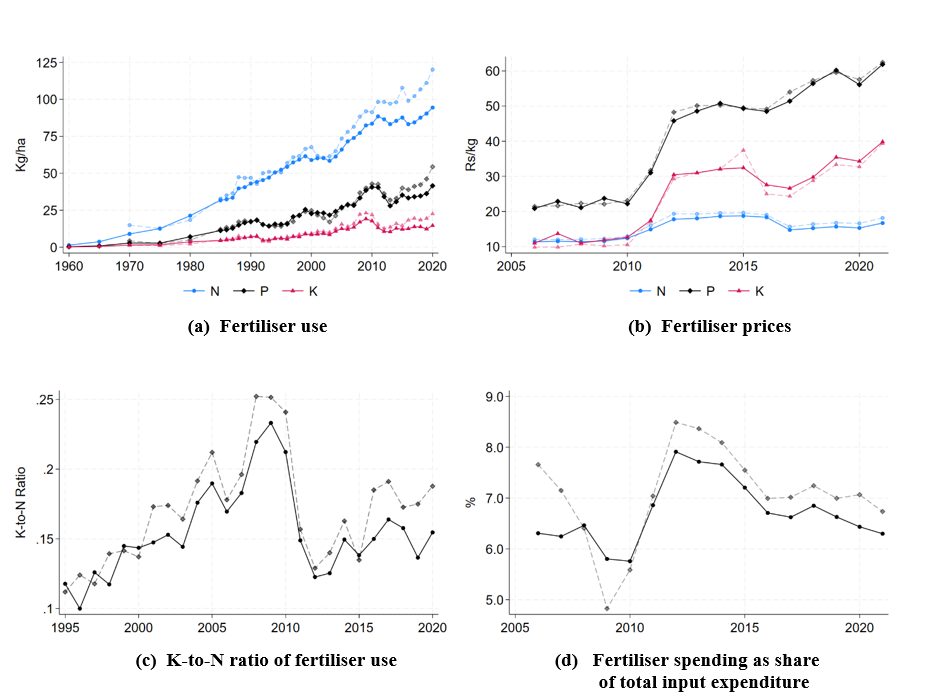Teens and Internet, Device Access Fact Sheet – Pew Research Center

Analysis of U.S. Adolescent Internet Usage and Digital Device Access in the Context of Sustainable Development Goals (SDGs)
This report analyzes trends in internet usage and digital device access among United States teenagers aged 13 to 17, based on survey data from 2014-2024. The findings are examined through the lens of the United Nations Sustainable Development Goals (SDGs), with a particular focus on SDG 4 (Quality Education), SDG 5 (Gender Equality), SDG 9 (Industry, Innovation, and Infrastructure), and SDG 10 (Reduced Inequalities).
Temporal Trends and Demographic Patterns in Internet Usage
Escalation in Daily Internet Use
Recent data indicates a significant intensification of internet engagement among U.S. teens, a trend with direct implications for several SDGs.
- In 2024, 96% of teens report using the internet daily.
- The proportion of teens reporting “almost constant” internet use has nearly doubled, from 24% in 2014-15 to 46% in 2024.
- This near-universal connectivity aligns with SDG 9 (Industry, Innovation, and Infrastructure), specifically Target 9.c, which aims to significantly increase access to information and communications technology.
- However, the rise in “almost constant” usage raises considerations for SDG 3 (Good Health and Well-being), highlighting the need to address the potential impacts of excessive screen time on adolescent mental and physical health.
Disparities in Constant Internet Use: An SDG 10 Perspective
The pattern of “almost constant” internet use is not uniform across all demographic groups, revealing digital divides that are central to SDG 10 (Reduced Inequalities).
- Race and Ethnicity: Hispanic (58%) and Black (53%) teens are significantly more likely to be online almost constantly compared to their White (37%) peers.
- Household Income: Teens from households with annual incomes below $75,000 are more likely to report constant use (50-51%) than those from higher-income households ($75,000+) (43%).
- Community Type: A notable gap exists between urban teens (55%) and their suburban (45%) and rural (39%) counterparts.
These disparities underscore the complex nature of the digital divide. While access may be widespread, the quality and context of that access differ, potentially exacerbating existing social and economic inequalities, a core concern of SDG 10.
Accessibility of Digital Devices: Progress and Persistent Gaps
Trends in Device Access (2015-2024)
The landscape of device access has evolved, showing progress in some areas while highlighting the critical role of specific technologies for educational and social inclusion.
- Smartphones: Access has become nearly ubiquitous, rising from 73% in 2015 to 95% in 2024. This reflects success in achieving the infrastructure goals of SDG 9.
- Computers (Desktop/Laptop): Access has remained high but relatively stable, moving from 87% in 2015 to 88% in 2024. This stability is critical when considering SDG 4 (Quality Education), as computers remain essential tools for academic work.
- Gaming Consoles: Access has been stable, recorded at 83% in 2024.
- Tablets: Access has seen a notable increase from 58% in 2015 to 70% in 2024, further supporting digital learning opportunities relevant to SDG 4.
Socioeconomic and Gender Disparities in Device Access
Significant inequalities in device access persist, directly impacting progress towards SDG 4 (Quality Education), SDG 5 (Gender Equality), and SDG 10 (Reduced Inequalities).
1. Household Income and Educational Equity (SDG 4 & SDG 10)
- Teens from lower-income households (
- This “homework gap” presents a significant barrier to achieving SDG 4, as it limits the ability of students from disadvantaged backgrounds to participate fully in modern education. It is a clear manifestation of the inequality targeted by SDG 10.
2. Gender-Based Differences in Technology Access (SDG 5)
- A pronounced gender gap exists in access to gaming consoles, with 90% of teen boys reporting access compared to 76% of teen girls.
- This disparity is relevant to SDG 5 (Gender Equality) as it may reflect and reinforce gender stereotypes in technology engagement, potentially influencing future educational and career pathways in STEM fields.
Analysis of Sustainable Development Goals in the Article
-
Which SDGs are addressed or connected to the issues highlighted in the article?
- SDG 4: Quality Education: The article’s focus on teens’ access to digital devices like computers and the internet is directly linked to modern educational opportunities. Access to these technologies is a prerequisite for digital literacy and participation in contemporary learning environments.
- SDG 5: Gender Equality: The article provides data disaggregated by gender, highlighting differences in access to certain technologies, which connects to the goal of empowering all women and girls and ensuring equal access to technology.
- SDG 9: Industry, Innovation and Infrastructure: This goal includes the target of significantly increasing access to information and communications technology (ICT). The article’s primary focus is measuring the penetration of internet use and device access among the youth population, which is a core component of this SDG.
- SDG 10: Reduced Inequalities: The article explicitly details the “digital divide” by presenting data on internet and device access across different household incomes, racial and ethnic groups, and community types (urban, suburban, rural). This directly addresses the goal of reducing inequalities within a country.
-
What specific targets under those SDGs can be identified based on the article’s content?
- Target 4.a (under SDG 4): “Build and upgrade education facilities that are child, disability and gender sensitive and provide safe, non-violent, inclusive and effective learning environments for all.” While the article measures home access rather than school facilities, access to a home computer is a critical component of an “effective learning environment” for students today. The data showing that teens from lower-income households are less likely to have computer access is directly relevant to this target.
- Target 5.b (under SDG 5): “Enhance the use of enabling technology, in particular information and communications technology, to promote the empowerment of women.” The article’s data on smartphone and game console access, broken down by gender, provides insight into how enabling technology is being accessed differently by teen boys and girls.
- Target 9.c (under SDG 9): “Significantly increase access to information and communications technology and strive to provide universal and affordable access to the Internet…” The article’s core data, which tracks the increase in smartphone access from 73% in 2014-15 to 95% today and the near-universal daily internet use (96%), directly measures progress related to this target within the U.S. teen population.
- Target 10.2 (under SDG 10): “By 2030, empower and promote the social, economic and political inclusion of all, irrespective of age, sex, disability, race, ethnicity, origin, religion or economic or other status.” Access to technology is a key factor for social and economic inclusion. The article’s data, which shows disparities in access based on household income, race, and community type, highlights challenges and progress toward achieving this target.
-
Are there any indicators mentioned or implied in the article that can be used to measure progress towards the identified targets?
- For Target 4.a: The article provides a proxy indicator by measuring the “% of U.S. teens ages 13 to 17 who say they have access to… a Desktop or laptop computer.” The data is further broken down by household income, showing 78% access for households earning less than $30,000, compared to 93% for those earning $75,000 or more.
- For Target 5.b: The article provides data that directly informs Indicator 5.b.1 (“Proportion of individuals who own a mobile telephone, by sex”). It states the “% of U.S. teens… who say they have access to… a Smartphone,” broken down by gender: 97% for girls and 93% for boys. It also shows disparities in gaming console access (76% for girls vs. 90% for boys).
- For Target 9.c: The article provides a direct measure for Indicator 9.c.1 (“Proportion of population covered by a mobile network, by technology”) through its data on smartphone access. The finding that “95% [of teens] report having access to a smartphone” serves as a strong indicator of access to mobile ICT.
- For Target 10.2: The disaggregated data itself serves as a powerful indicator of inequality. Specific indicators from the article include:
- By Income: The 15-percentage-point gap in computer access between the lowest and highest income brackets (78% vs. 93%).
- By Race/Ethnicity: The percentage of teens who are “almost constantly” online varies significantly, with 58% of Hispanic and 53% of Black teens reporting this, compared to 37% of White teens.
- By Community Type: The percentage of teens “almost constantly” online is 55% in urban areas versus 39% in rural areas.
-
SDGs, Targets, and Indicators Table
SDGs Targets Indicators (as mentioned or implied in the article) SDG 4: Quality Education 4.a: Build and upgrade education facilities… and provide… effective learning environments for all. Percentage of teens with access to a desktop or laptop computer, disaggregated by household income (e.g., 78% for SDG 5: Gender Equality 5.b: Enhance the use of enabling technology… to promote the empowerment of women. Percentage of teens with access to a smartphone, by gender (Girls: 97%, Boys: 93%).
Percentage of teens with access to a gaming console, by gender (Girls: 76%, Boys: 90%).SDG 9: Industry, Innovation and Infrastructure 9.c: Significantly increase access to information and communications technology and strive to provide universal… access to the Internet. Percentage of teens with access to a smartphone (95%).
Percentage of teens who use the internet every day (96%).SDG 10: Reduced Inequalities 10.2: Empower and promote the social, economic and political inclusion of all, irrespective of… race, ethnicity… or economic… status. Percentage of teens online “almost constantly,” by race/ethnicity (Hispanic: 58%, Black: 53%, White: 37%).
Percentage of teens online “almost constantly,” by household income (Percentage of teens online “almost constantly,” by community type (Urban: 55%, Rural: 39%).
Source: pewresearch.org

What is Your Reaction?
 Like
0
Like
0
 Dislike
0
Dislike
0
 Love
0
Love
0
 Funny
0
Funny
0
 Angry
0
Angry
0
 Sad
0
Sad
0
 Wow
0
Wow
0





/https://media.globalcitizen.org/ea/9e/ea9e1a08-9cc4-472e-a0a7-57a76f7c1e06/screenshot_2025-11-06_at_101647.png?#)












![Architects use comics and humour to rethink sustainable cities [Interview] – Mongabay-India](https://imgs.mongabay.com/wp-content/uploads/sites/30/2025/11/06135611/1761635108000-768x511.jpeg?#)






























































